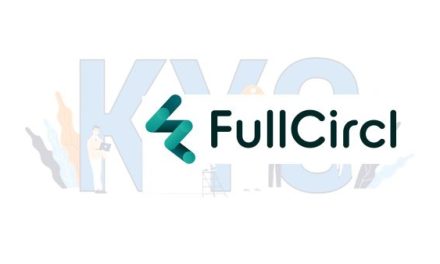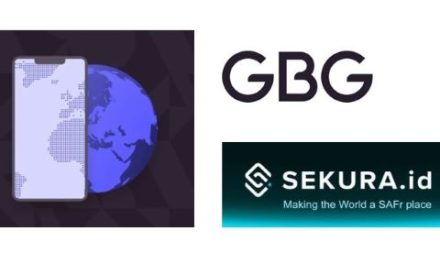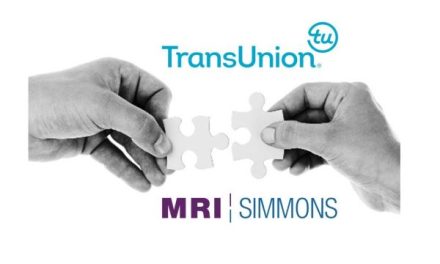Or – What Alexander the Great Can Teach Us About the Importance of Digital ID
 A guest blog by David Francis, Global Data Consortium’s Advisory Board
A guest blog by David Francis, Global Data Consortium’s Advisory Board
In Kandahar City, the capital city of one of the largest provinces in Afghanistan, sits a massive boulder. It’s difficult to appreciate the size of it; it’s easily as large as a suburban office building. There are tunnels dug throughout, linking the ground with the top of the structure. Its sides are worn down by time and Kandahar’s extreme temperatures. But you could tell, at one point, this structure had a purpose.
I visited this during the height of the war against the Taliban in Afghanistan. Next to it, a small group of Afghan men were digging the foundation of what was supposed to be a government building; Canada had spent about $8 million on the project, meant to improve governance in Kandahar, a place that has lacked a strong central government for generations.
It was also meant to get money directly into the pockets of the Afghanis working at the site. I was told by a Canadian official that the men made about a dollar each day to economically empower them. Perhaps, down the line, it would allow them to open a bank account, to build credit, maybe even to help them own property. Western government spent hundreds of billions of dollars on such efforts.
 Now, it’s clear that the vast majority of these hundreds of billions of dollars meant to help ordinary Afghanis has failed. Most of it can’t be accounted for, assumed to be lost to in the fog of war. As for that government building – it was never completed, and the majority of the money spent on the project disappeared, and failed to end up in the hands of the people it was meant to help.
Now, it’s clear that the vast majority of these hundreds of billions of dollars meant to help ordinary Afghanis has failed. Most of it can’t be accounted for, assumed to be lost to in the fog of war. As for that government building – it was never completed, and the majority of the money spent on the project disappeared, and failed to end up in the hands of the people it was meant to help.
Before I left that site Kandahar City, I asked what the boulder was. It was clear, at some point, it had a purpose. My translator told me the structure was created sometime around 520 BC. About two hundred years later, it served as a fortress for Alexander the Great (you can see a picture of it here). To this day, it’s the most enduring structure in all of Kandahar.
The Power of Identity
I often wondered why Alexander’s structure has endured with other efforts to shape Afghanistan have failed. I believe that it has to do with Alexander’s understanding of the Power of Identity.
Alexander is considered one of the more cunning and ruthless military leaders in history. But he also understood that in Afghanistan, keeping local customs and norms was the key to ruling. He did both of these things, even marrying an Afghan women. He took the time to get to know the people under his charge. Essentially, Alexander engaged in a process we now refer to as “Know Your Customer” (KYC) to succeed.
Alexander understood the power of local knowledge and identity. More than two millennium later, those of us in the digital ID industry are trying to understand the same – how to capture local knowledge and identity, but in the digital space, and across the emerging and developing world. We are trying to find innovation solutions to meet KYC requirements in order to allow people in these parts of the world to participate in the global, digital economy.
Nearly two-thirds of the world’s population – more than 5 billion people – have no access to a form of digital ID; this makes their participation very challenging. Many of these people live in Asia – including Afghanistan – Africa, and South America, where meeting global standard KYC requirements is extremely challenging.
A Tight Fit
This is, in part, because existing and evolving regulations are a poor fit when applied to the emerging and developing world. To avoid being “black” (or “grey”) listed by the Financial Action Task Force the self-declared watchdog and standard setter of Anti-Money Laundering and Counter-Terrorist Financing standards, KYC processes are applied to the reality of what’s on the ground.
Let’s go back to the Afghan example. Afghanistan is a nomadic country; many people there lack fix address in the western sense. There also isn’t an effective digital national ID program.
But that doesn’t mean these people don’t participate in civic life in a way that leaves some kind of trail. Many vote; while in Kandahar, I visited a government building that housed thousands of records. They also might have registered with a regional or the national government.
To be sure, I don’t mean to suggest all of the developing world is trailing the developed world in the digital ID space. For instance, Chinese e-commerce has leapfrogged the developed world; the e-commerce market there is the largest in the world with $1.94 trillion USD in sales 2019. That is plus 27% increase from the previous year. Aadhaar, India’s digital ID program, is considered a success. Who knows what’s possible in other emerging markets? Could they make similar strides that we don’t think are possible?
What we are suggesting is that in the emerging and developing world, there are existing untapped data sources that are accessible. Many of them might not be digital, but that’s a problem that can be solved. In other words, it’s possible to create digital IDs for many.
The question is, can we think of digital ID and KYC requirements in more flexible terms? How do we create a connective tissue to make emerging market reality relatable to the first world that has difficulty understanding a world where it’s very common not to have an address? And can we convince western firms that the economic opportunities are real?
One example of the myriad of economic benefits of leveraging digital identity is remittances, which usually takes the form of money sent back home from a member of a country’s diaspora. In 2018 overall global remittance grew 10 percent to US$689 billion, including US$528 billion to developing countries. Overall global remittance is expected to grow 3.7% to US$715 billion in 2019, including US$549 billion to developing nations.
The top remittance country recipients are among the largest developing economies in the world, all of which have large diasporas. They include India, China, Mexico, Nigeria, Pakistan, Vietnam and Bangladesh.
Studies have shown that the economic benefits of remittances are more than three times larger than foreign assistance from developed countries, like the money spent and lost in Afghanistan, because they get money into the hands of the people who need it.
They also increase personal savings, which, in turn, can help build credit. A 10% increase in remittances increases savings by 7% and investment by 6.5%, while the same 10% increase in foreign aid increases savings and investment by respectively 1.6 % and 1%.
The entry of new FinTech companies offering digital and mobile alternatives to in-person remittances has played a role in decreasing the cost of remittances from nearly 10% to 6.7% in the last decade, according to the World Bank. These providers leverage digital identity verification, keeping costs low and provide safer alternatives to “Hawaladars” and illegal unlicensed money transfer networks.
This is an important point, as Money Service Businesses have onerous KYC obligations, even though the U.S. Treasury themselves have stated that transactions less than $500 have little AML risk (the average remittance between the U.S. and Mexico is around $150).
Further reducing costs through leveraging technology by 5 percentage points relative to the value sent, remittance recipients in developing countries would receive over $16 billion dollars more each year than they do now. This added income could then provide remittance recipients more opportunity for consumption, savings, and investment in local economies.
A Workable Solution
 Remittances are just one industry where unlocking the Power of Identity creates economic opportunities. Online gaming is growing increasingly popular in the developing world, as is age restricted commerce. Fintech hotspots are also emerging in places like Kenya and Vietnam. The need to prevent fraud continues to accelerate across the world.
Remittances are just one industry where unlocking the Power of Identity creates economic opportunities. Online gaming is growing increasingly popular in the developing world, as is age restricted commerce. Fintech hotspots are also emerging in places like Kenya and Vietnam. The need to prevent fraud continues to accelerate across the world.
There’s reason to be optimistic that digital ID firms can start to solve KYC in the developing world. Adding additional customers by leveraging digital IDs is a good idea that’s ahead of its time, and the shift to online commerce during COVID is only emphasizes that need.
Even large institutions like Mastercard have acknowledged that a collaborative approach to this problem is required. And while there isn’t a complete digital ID solution right now, that doesn’t mean a possible one isn’t in the works, including one at Global Data Consortium.
On the regulatory front, advances in privacy protection are beginning to challenge two decades of AML/CTF-led thinking around the rights of individuals and their personally identifiable information. Current litigation on privacy protection at a minimum is creating incentives for companies to re-assess their application of “risk based” information collection and verification for KYC.
Solving digital ID and KYC requirements around the world is a difficult, complex problem. As the industry works toward a solution, it’s worth keeping in mind the lesson Alexander the Great learned thousands of years ago: Local knowledge and expertise is key to understanding people and finding solutions that serve these potential customers along with business interests.
About the Author: David Francis is a member of Global Data Consortiums’ Advisory Board. He is the CEO and Founder of Ozanam Strategic Insights
 About Global Data Consortium (GDC): We are on a mission to empower businesses with the tools to get to know their customers, stay compliant, and deliver real-time solutions. The growing international commerce landscape and our passion for enabling an ecosystem of global partnerships is at the heart of why we started GDC. Our Worldview platform facilitates the relationship between local and global markets by pairing businesses to locally sourced data from all over the world. GDC is a member of BIIA
About Global Data Consortium (GDC): We are on a mission to empower businesses with the tools to get to know their customers, stay compliant, and deliver real-time solutions. The growing international commerce landscape and our passion for enabling an ecosystem of global partnerships is at the heart of why we started GDC. Our Worldview platform facilitates the relationship between local and global markets by pairing businesses to locally sourced data from all over the world. GDC is a member of BIIA




























